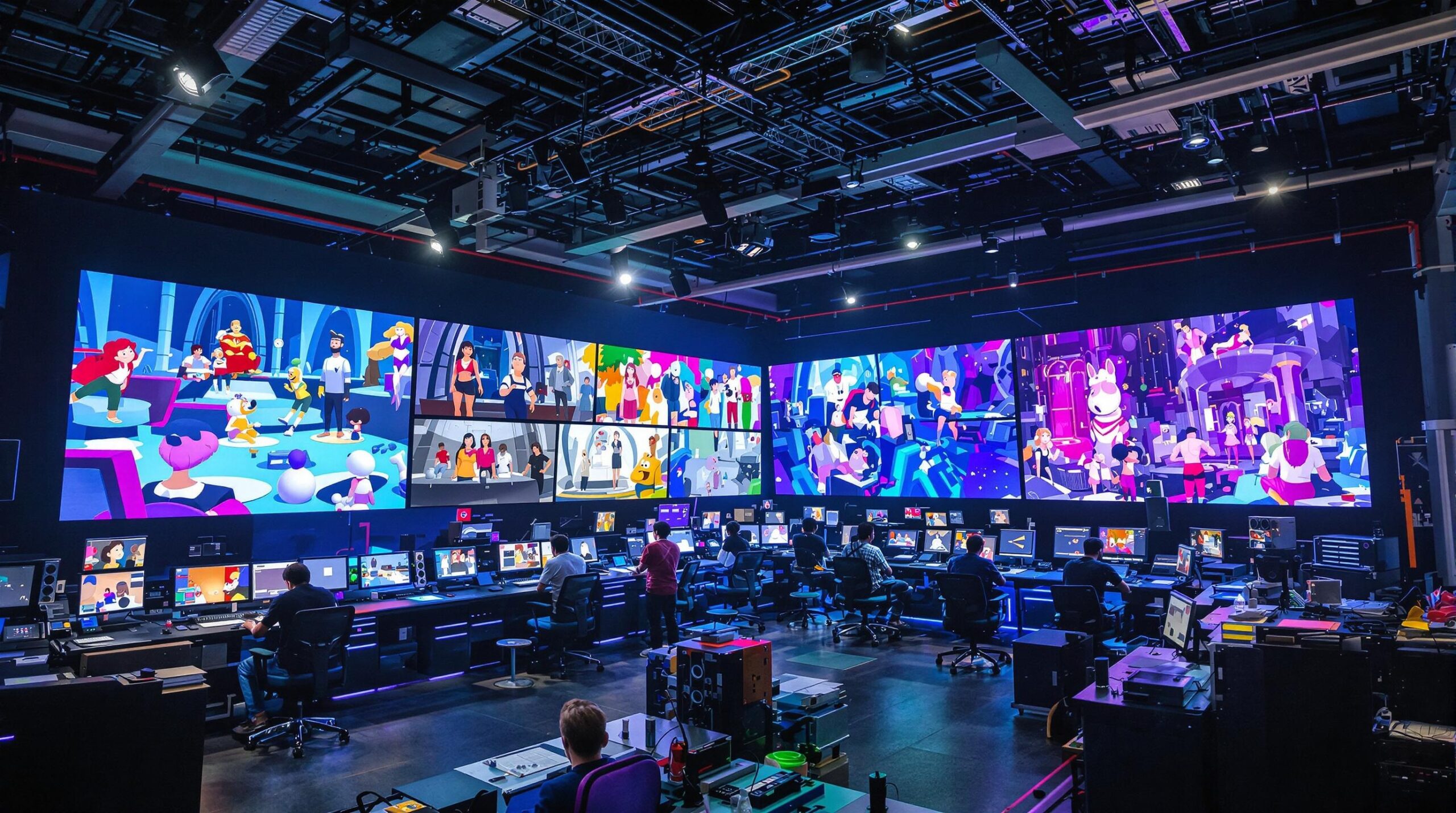Quantum computing, a cutting-edge tech development, is steadily reshaping various sectors. This novel computing paradigm could revolutionize film animation. Traditional animation techniques are evolving, with technology progressively influencing how artists bring ideas to life. As the demand for CGI and breathtaking visuals grows, the film industry seeks innovative tools to enhance creativity. Quantum computing may provide the solutions animators need to push creative boundaries.
Understanding Quantum Computing
Before exploring its impact on animation, it’s crucial to understand quantum computing. Unlike classical computers, which use bits, quantum computers use quantum bits or qubits. Qubits can exist in multiple states simultaneously, a property called superposition, allowing for more powerful computation. Furthermore, quantum entanglement allows entangled qubits to be correlated with each other, even over vast distances. These properties enable quantum computers to solve complex problems much faster than classical ones potentially. Their ability to perform complex calculations quickly could save animators significant time.
Traditional Animation vs. Quantum Animation
Current animation techniques rely heavily on classical computers to render graphics and simulate environments. For decades, animators have used powerful computers to produce stunning imagery. However, this process can be time-consuming, especially with complex scenes requiring intricate detail. Quantum computing offers the potential to render these scenes much faster. Its power could make real-time rendering of complex scenes feasible, transforming the animation workflow.
Rendering Speed and Efficiency
Moving from classical to quantum animation could dramatically speed up rendering times. Traditionally, rendering detailed CGI images takes hours, even on robust systems. Quantum computers might complete these tasks in minutes. Quickly rendering animations reduces production times, allowing more focus on creative aspects. Faster processing enables animators to iterate and refine soon, enhancing the final product quality. This efficiency opens new possibilities in real-time rendering and dynamic scene adjustments.
Enhancing Complex Simulations
Film animations often require simulations of natural phenomena, complex physics, or intricate character movements. Classical algorithms can struggle with these complexities. Quantum computers could efficiently handle these simulations, producing more realistic effects. With quantum computing, animators might simulate complex systems, like fluid dynamics, with unprecedented accuracy. Enhanced simulation capability offers animators a broader palette to create lifelike animations. These tools could lead to breakthrough visuals, drawing audiences into more immersive cinematic worlds.
New Animation Techniques Enabled by Quantum Computing
Integrating quantum computing into animation would optimize existing processes and spark entirely new animation methods. As technology evolves, animators might explore previously impossible creative directions. Quantum algorithms could allow real-time scene manipulation based on physical laws, introducing innovative techniques. Animators could develop interactive environments that respond to on-screen actions in real-time. This evolution supports the creation of more engaging and interactive storytelling experiences.
Real-Time Ray Tracing
Ray tracing is a rendering technique that creates realistic lighting effects. It simulates light interaction with surfaces for photorealistic results. Quantum computing could revolutionize this technique with real-time capabilities. Currently, photorealistic animations require substantial computing resources and time to render. Quantum-powered real-time ray tracing would create visually stunning outcomes while reducing computation demands. Animators could experiment more freely, with real-time feedback guiding artistic decisions.
Procedural Content Generation
Quantum computing might excel at generating procedural content, offering vast possibilities for creative expression. Algorithms could create environments, characters, and textures autonomously based on simple inputs. This capability would give animators nearly limitless creative power. Procedural content generation boosts productivity by minimizing rote tasks, freeing artists for high-level creativity. Quantum systems enhance these techniques, creating richer content faster than current systems.
Bridging Animation and Artificial Intelligence
The intersection of quantum computing and AI may lead to unprecedented animation capabilities. AI is already transforming animation, enabling machines to learn patterns, styles, and techniques. Coupled with quantum computing, AI could rapidly process immense datasets, learning complex visual styles. This synergy could automate labor-intensive tasks like motion capture or scene composition. Intelligent quantum-animated systems might adapt to user inputs, personalizing content for unique viewer experiences. These advancements signal a new era where animation becomes more adaptive and immersive.
Challenges and Considerations
Despite the exciting possibilities, challenges remain in integrating quantum computing into animation. Quantum technology is still in its infancy, with hardware development ongoing. Current quantum computers are not yet stable enough for large-scale commercial use. Noise and error rates present hurdles that engineers must overcome to ensure reliable performance. Cost is another consideration, as quantum systems are expensive to build and maintain. These factors mean we must carefully plan and invest in research and development.
Workforce Adaptation
The transition to quantum-driven animation necessitates workforce adaptation. Animators and engineers will need training to understand and utilize quantum systems effectively. Educational institutions may need to develop specialized curricula to prepare students for this future. Ensuring the existing workforce transitions smoothly involves investment in professional development programs. By cultivating quantum-ready talent, the industry positions itself to leverage new technologies.
Ethical Implications
Another layer of complexity arises from the ethical implications of quantum computing in creative fields. Automation could alter job landscapes, reducing demand for some traditional skills. We must consider the impact on creativity, ensuring technology complements rather than replaces human input. Balancing technological progress with ethical stewardship is vital to fostering a sustainable film industry ecosystem.
A Dynamic Future for Film Animation
The potential of quantum computing in animation is immense. As development progresses, the technology may redefine industry norms. Quantum systems promise unprecedented rendering capabilities and open new creative horizons. Real-time solutions and enhanced simulations could push cinematic experiences to new levels of engagement. As we advance, the synergy between quantum computing and animation may unlock new realms of creativity. While challenges remain, the potential is vast and exciting, promising revolutionary changes in storytelling.
In conclusion, quantum computing represents a transformative force in film animation. Its integration could lead to groundbreaking techniques and visuals that captivate audiences globally. The film industry stands on the brink of a quantum-powered evolution, promising a new era of innovation. Balancing technical advancements with workforce adaptation and ethical considerations will ensure a fruitful transition. Embracing this dynamic future is key to unlocking unprecedented narratives and artistic expression.


